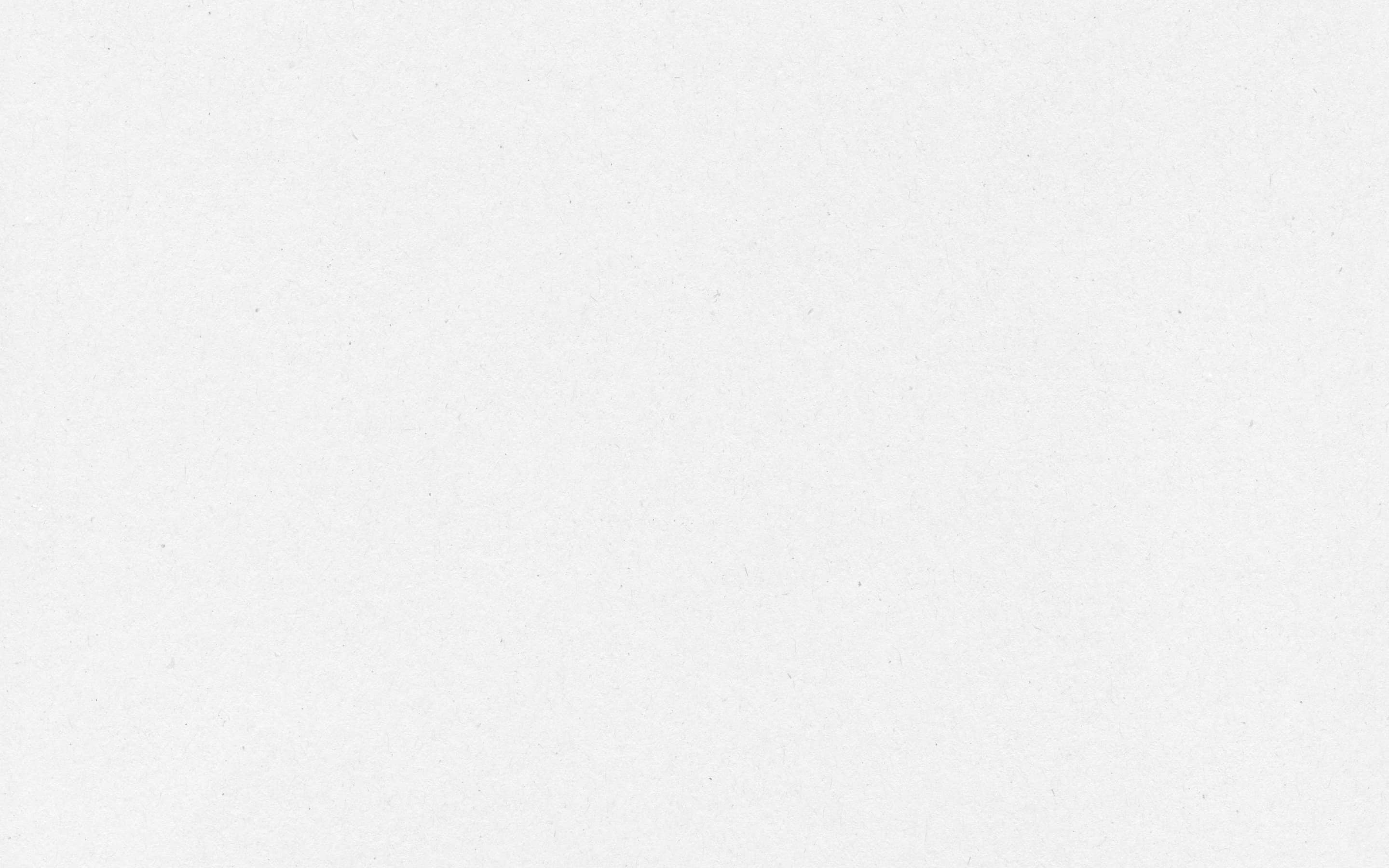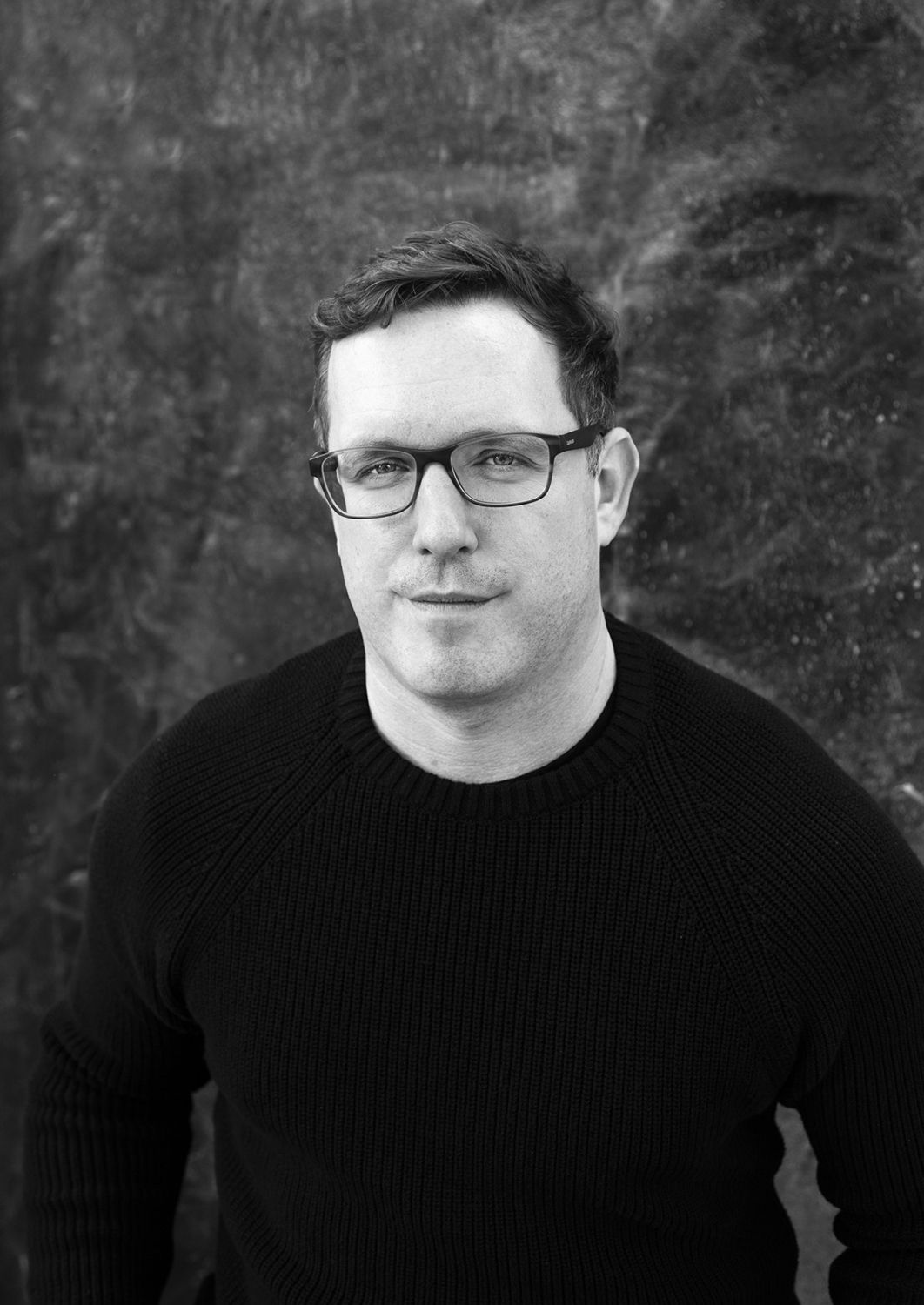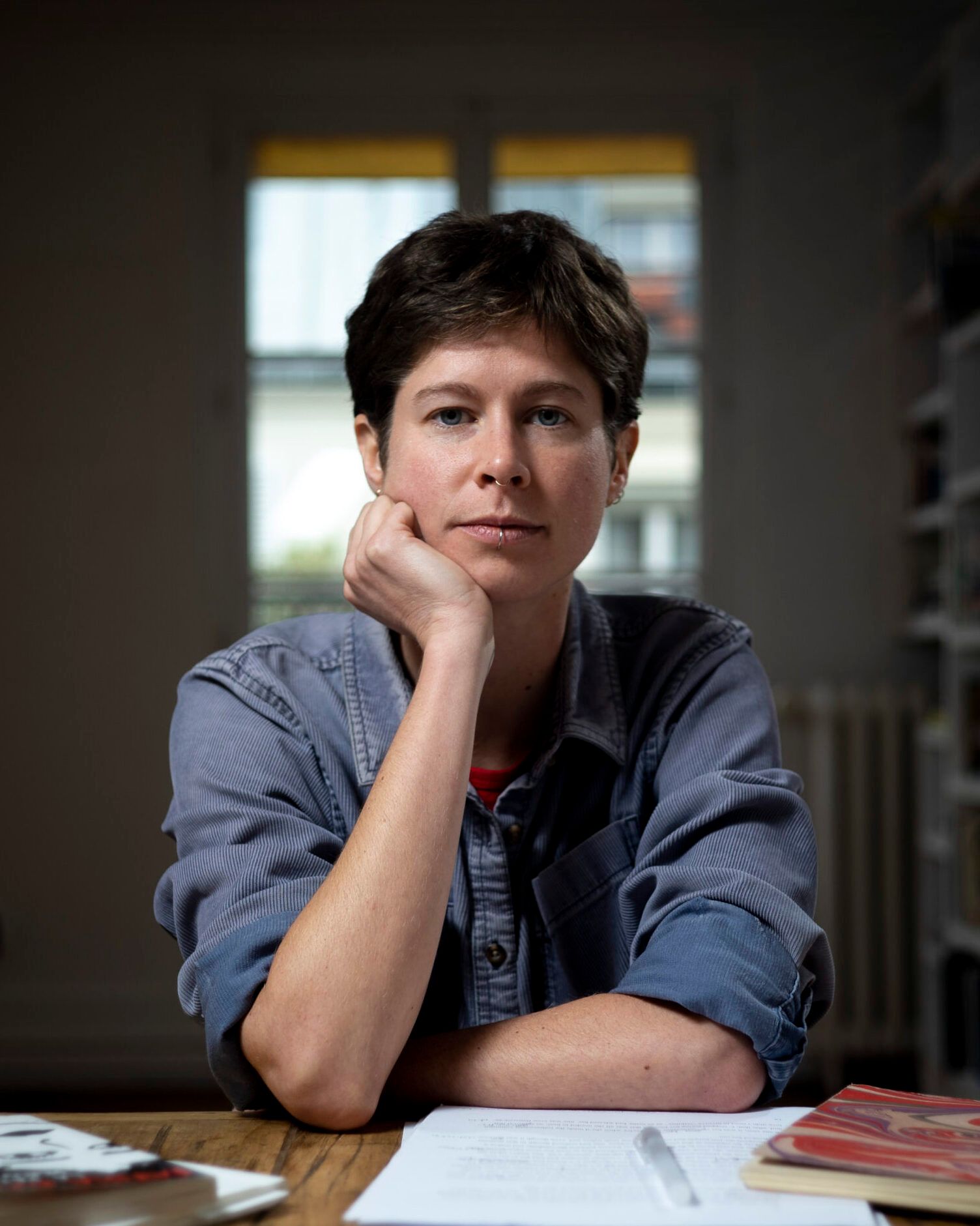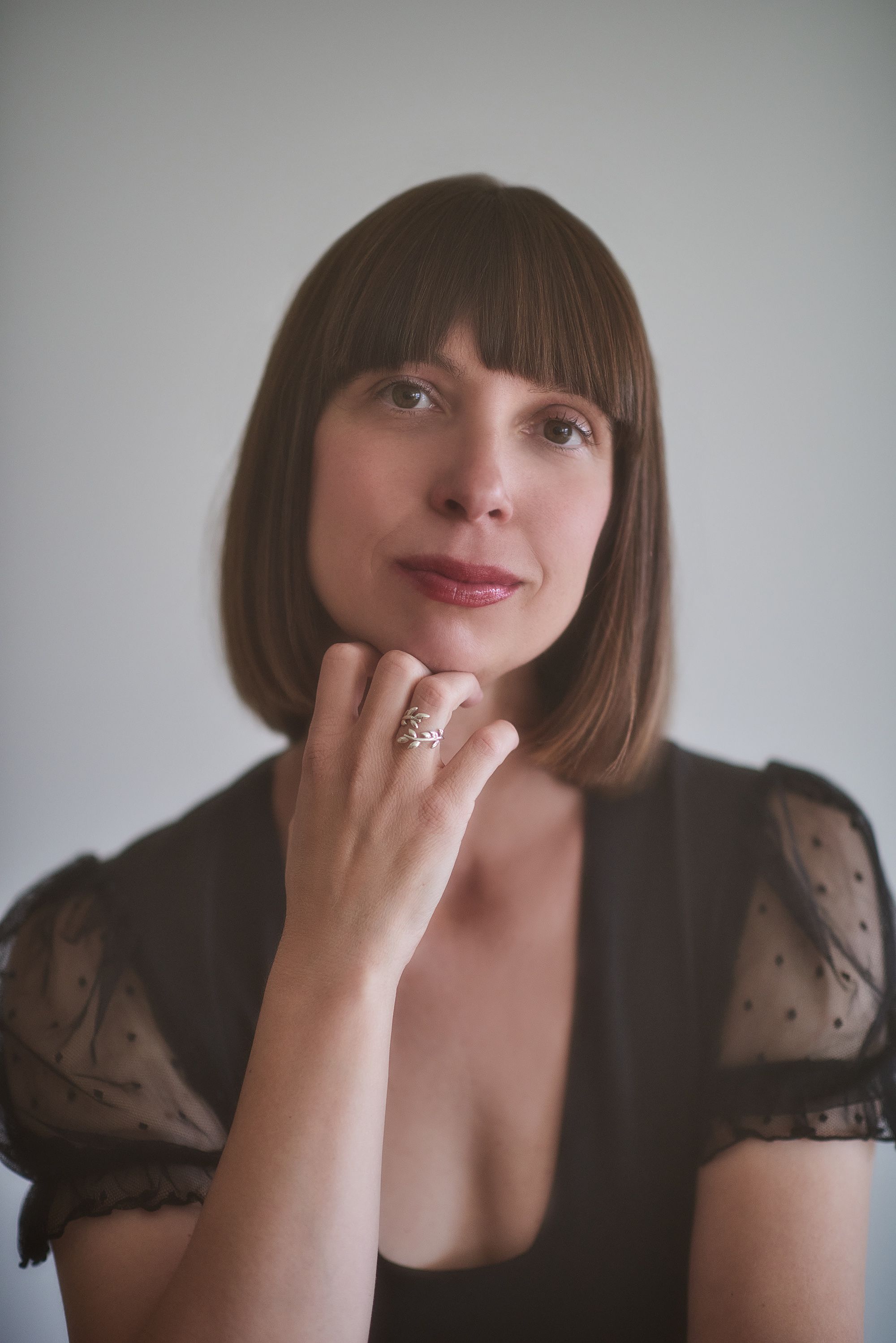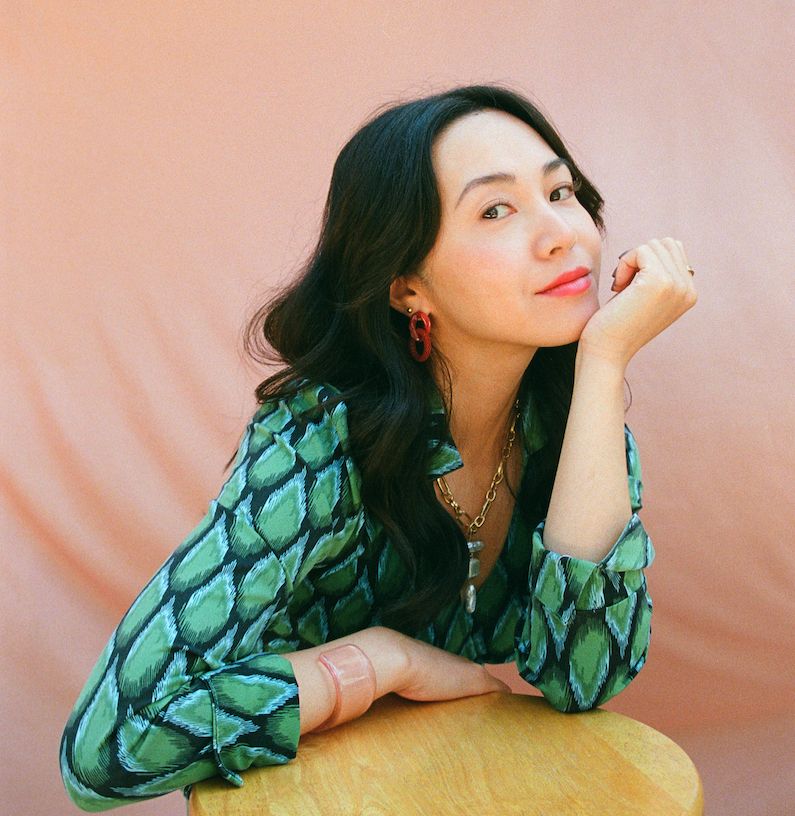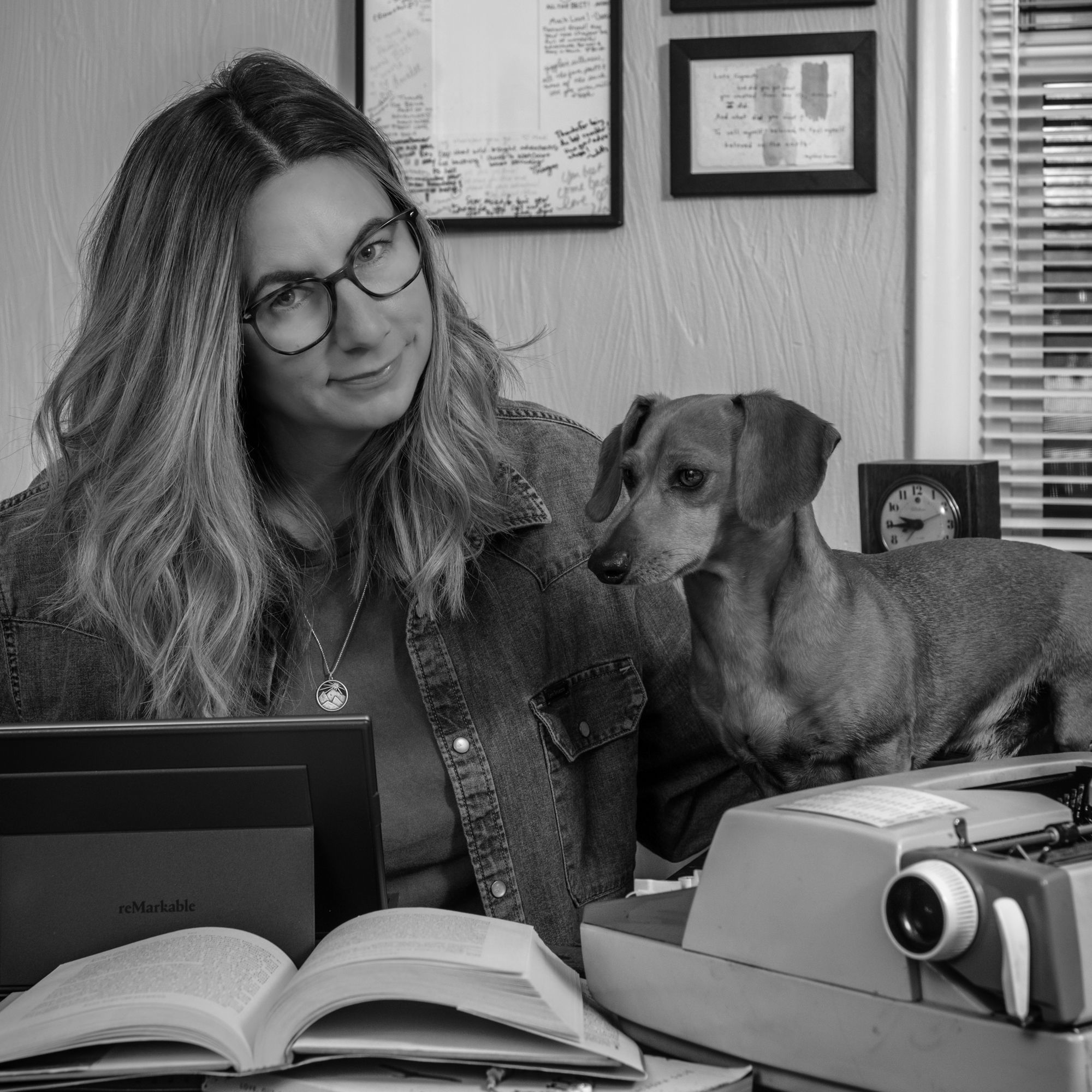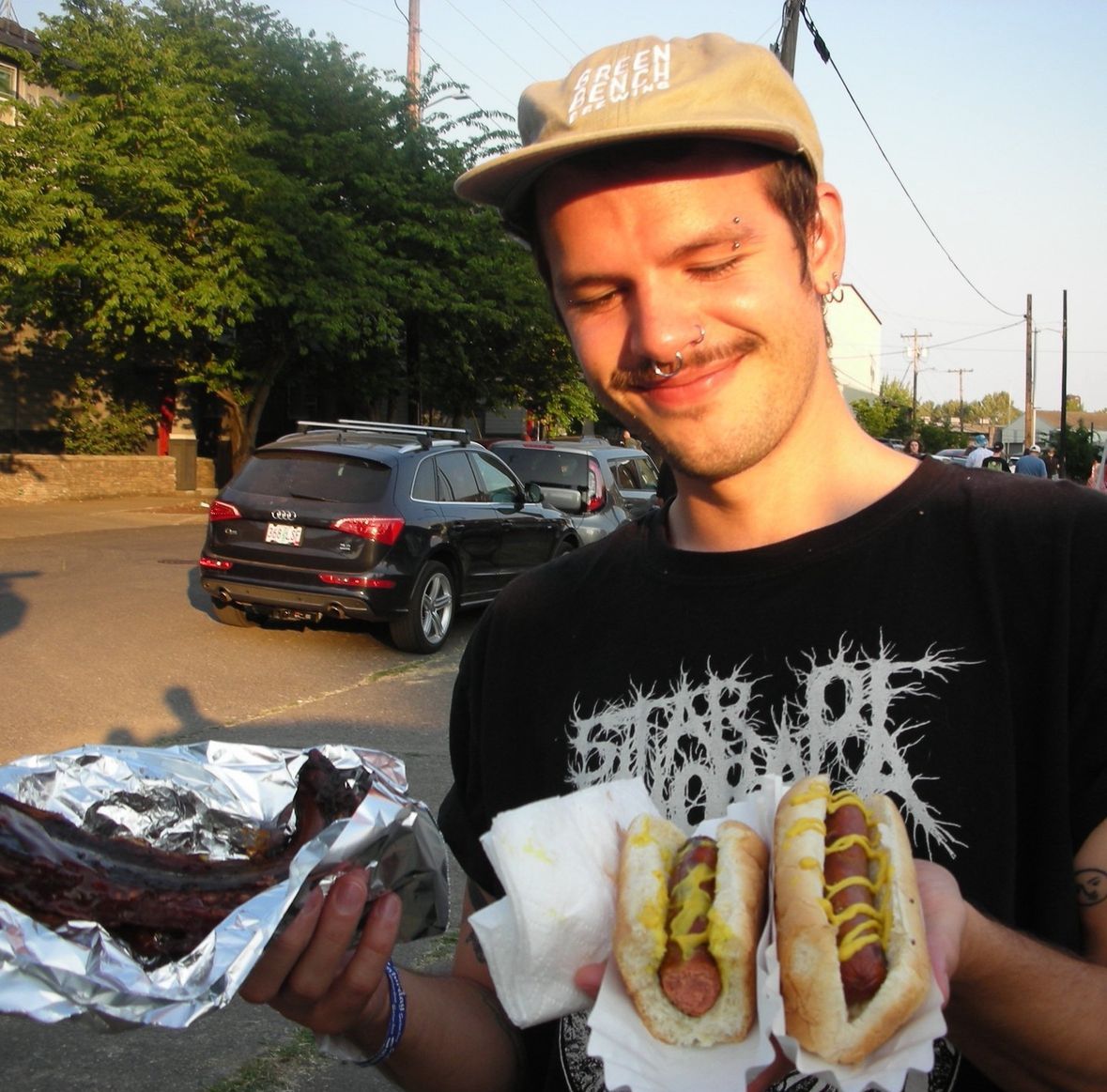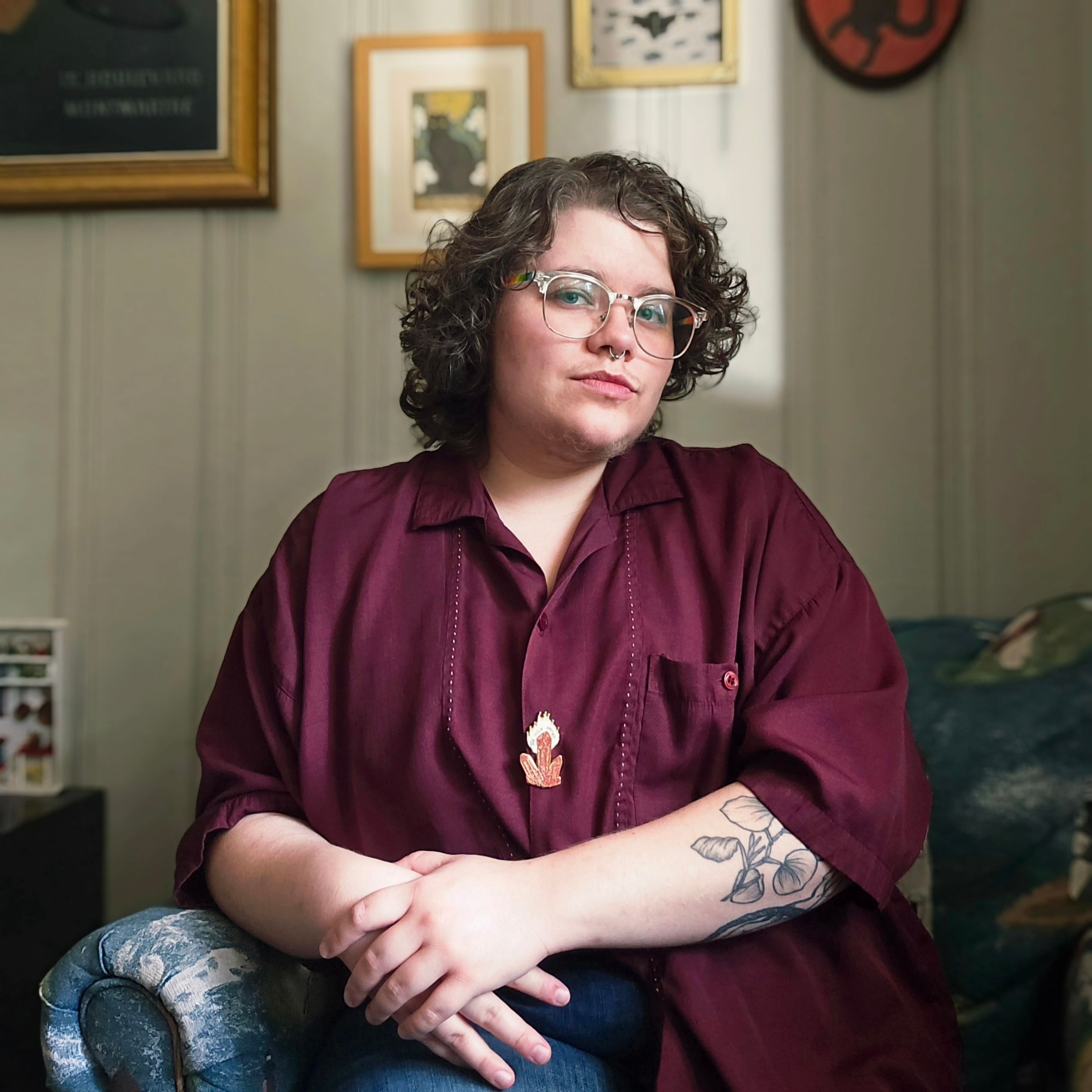Emily Ehrhart: Places is a creative approach to memoir– a “memoir in miniature.” You offer vignettes from two decades of your life. Throughout your memoir, you often take original approaches to text format (structuring prose as poetry, leaving blank spaces, scratching out words and sentences, doing pros and cons lists, etc). I feel that this approach gives your memoir a more personal feel, almost as if I was reading your journal instead of a soon-to-be released memoir. I'm curious, was that your intention, or was there another reason for this unique formatting and structure?
Jennifer Lang: I really don’t know whose path is linear when they write a book, this one certainly was not linear. I had a 65,000-word story in 2018 and it was the story of my marriage and finding home. Two women read it and said that I was not asking the right questions. I had hired a developmental editor who gave me loads and loads of feedback, and asked me to do things I could not do. For example, make everyone—my husband and children—more multi-dimensional, to flesh them out. I felt like my adult children, especially my oldest, were launching into the world. My son’s got his own really big presence and had asked me to stop naming him in my writing. So, I couldn’t do what was asked of me. It had all the connective tissue of memoir, but I didn’t like it. I put it away.
While it was away, I started learning about flash and took Kathy Fish’s online flash classes. I think I took two classes in a six-month period. And then I started writing more compressed prose. I found a call for submissions from a British Journal called Mslexia. The call for submissions was "J is for..." with a 300-word max. I went straight into my 65,000-word manuscript, and I knew what word I wanted – jury. It ended up not staying in either book, but it is when my husband and I were married 20 years and two days and we were having this really intense conversation about whether to stay together or not, and deliberating like a jury of two. I pulled out this chapter where this word was buried, and I chiseled and compressed and got it into 300 words. It was like a whole different world, it sang, it wowed me. Then the next month was “K." I kept going forward, then I went backward. I did A through Z. Over months, I ended up with an irregular number of letters; it happened organically. When I got to X it made me think of X marks the spot, and I went into geographical coordinates.
Somebody gave me feedback along the way that they wish they had seen my pros and cons list, they would have loved that. I didn't have it, and I just sat with that for months, maybe years. At the same time, I kept taking flash classes and writing very specific word counts with prompts. I was writing all about my life here, and I was calling it my little Israeli life. Big stuff happening in my little Israeli life, and the feedback I was getting was wow, you should write a memoir in flash. I started thinking about it.
That’s how the memoir became flash. Back in graduate school at VCFA, I worked with Patrick Madden my second semester, and he wrote in the margins of one of my essays "you should think about writing about your marriage.” I wrote back "What about my marriage?" and he said, "You have an interesting marriage.” It took me four months to start. I kept going back to him, asking questions until I finally started writing scenes from what I was calling a mixed marriage. It was mixed religion and mixed culturally—we are of the same religion, but we practice differently.
Barbara Hurd (my third semester mentor) and a friend said that they thought I was asking the wrong questions. They thought my story wasn’t so much about my marriage, but my journey.
I realized that all of the flabby and connective tissue of a memoir wasn’t something I was interested in. I was also reading more becoming a better writer. I realized that something that turns me off in a book is when a writer repeatedly gives the reader information because they think the reader isn’t remembering. I was finding this redundancy and repetition of information annoying. I also like clean.
So, I started asking new questions – what was my journey, how did I find home? I realized the story had started in 2011 when we landed in Israel so I started over. I didn’t go back to that first 65,000 words; I started writing in short chapters immediately. I'm a structure freak and I went straight for structure.
I knew I had a seven-year story to tell from 2011-2018. Seven is a very symbolic number both in Judaism and yoga. I knew that yoga was a big part of my story. Are you familiar with yoga?
EE: I am, I’ve been a yoga teacher for eight years.
JL: That’s right! Yes, so you know there are seven chakras*. I knew the chakras had to be in my story. My first teacher was world-famous Rodney Yee. I knew that Rodney and learning yoga from him were part of my story.
Here's how Landed is structured: I have a seven-year story told from the start of the Jewish New Year, which is September. There are seven big chapters, and each year is divided into a chakra story, my chakra story. It’s as if I was in a class with Rodney and he was working up through the chakras. Another reason seven is important is Phillipe, my husband and I had never stayed anywhere longer than six years. It’s like we got an itch, and we just never stayed anywhere. The fact that we stayed in Israel for more than six years was significant.
Having roots allowed me to remove my mask, meaning I was no longer going to do what my husband did, I was doing what I wanted to do. I don't go to Synagogue anymore, and no one can tell me that I need to go. I'm independent. I’m going to curse you if you tell me that I have to do something when it comes to Judaism. I’ve done it. I went [to Israel] in 2011 saying I'm going to do it my way, but it took seven years to completely remove my mask.
EE: I saw that as the turning point in your story, when your daughters wanted to go swimming and ride in a car on the Sabbath, and you gave them permission. From there, you realized that you were going to experience Judaism your way. To make that decision is different than fully putting it into practice so I love that acknowledgement that it took seven years to fully embrace what you set out to do.
JL: That’s really interesting. For me the turning point was when Phillipe apologized to me in therapy. That was really big. That allowed me to stop being angry, but I needed to realize that I also had to apologize to myself for when I was 23, enamoured and gave into him.
EE: That allowed you to move forward with your husband?
EE: I would like to talk about the yoga. There is so much that resonated with me in your book because I’m a yogi, and in this memoir you take us through your journey as a yogi. Your memoir is peppered with yoga themes—breath, rooting, balance and focus—and yet, throughout this memoir you experience tension, indecision, instability and conflict, which are very different from the principles of yoga that you embrace throughout this story. How did you reconcile these two versions of your life?
JL: Yoga saved me. When I think back to those first classes, I was thirty, I was a mom, we just moved again. I knew that we wouldn’t stay; I didn’t know how long we were going to be there; I didn't want to go back to Israel. I would go to these [yoga] classes with Rodney Yee, a beautiful man, and hear him talk about the importance of feeling the ground underneath me. Nothing felt firm at that time in my life.
I grew up rooted, my parents are so Californian. My roots are not deep in America, but really I have monolingual, California parents who have stayed in the state their whole lives. When I was young, we did a lot of road trips in the summer, all the way up to Vancouver, and summer camps. When I was 14, 15 we had foreign students stay with us; when I was 16 a South African lived with us for a year. We had a lot of influences. We also had been to Israel a few times, which was so uncommon in the 1970s. I grew up in a non-practicing, non-religious, non-believing Jewish family that supported Israel. I’ve been coming to this country [Israel] since I was 5, in 1971. I did so many trips [to Israel] that the pull to come here was very strong.
When I was six, my mom put me in a French class. I took French throughout school, and I did my junior year of college in Paris. I got an intense wanderlust bug. In my early 20s, I had this pull and a job landed in my lap. I went for it. I wanted to learn another language, to be in another country. I wanted to be mistaken for French. And yet, I missed home. I was so close to my parents, missed my friends. I felt like I was off kilter with everybody, and different than everybody, and this struggle has played out on every level for so many years.
So, enter yoga and the idea and reminder to root down, feel feet on ground. It sounded like what I needed. It calmed me down. It gave me boundaries when I felt the chaos of a move, raising little kids, not knowing where we were going to live. It quieted me and it was my answer to the chaos in my personal life.
EE: I am curious, as yogi and a writer, how do you think yoga impacts your writing process? How do you think the two relate to one another, if at all?
JL: I’m not sure it’s clear cut for me. I've been writing a long time; I was a freelance magazine writer starting in 1997. Yoga entered my life in 1995. In 1997, after my second baby was born, I was at home and bored, bored, bored. The dot-com industry was starting. A friend of mine in the industry asked me if I was interested in copyediting, which soon became editing, which became writing and becoming part of a team, without having to be part of the office politics.
I brought my first real personal project of me editing a friend's journal of her first pregnancy, editing it and publishing it in 1998. Then in 1999, I was asked to keep a journal of my third pregnancy because of my raw voice, and that went up live in 2000. That editor kept telling me don't just rely on us, use this as your jumping board and go write other things. I did. I started writing very small pieces for Parenting and Parents and Scholastic. I started writing longer pieces. I was always interviewing an expert, but I was never an expert.
I would read essays in all these national magazines that were first person essays, and I would wish I could write like that. These were personal stories that would make me well up with tears, or make me shiver, or make me sigh, or make me hold my breath. I wanted to write like that so I started taking classes around 2003, 2004. I landed in creative nonfiction, not really understanding what it meant. My first teacher was Rebecca McClanahan, an amazing writer. I learned so, so much from her. I joined a writing group, we were all her disciples, we shared her language.
EE: I hear from fellow writers that writing, although wonderful in many ways, can also trigger imposter syndrome, perfectionism, stress, anxiety. In some ways it seems like writing has the potential to be the antithesis of yoga principles. So, I’m curious if those yoga principles have influenced your approach to writing at all.
JL: I saw the movie You Hurt My Feelings and I was disturbed. I’ll explain why. I no longer teach yoga, but I taught for 20 years. There was a point in New York when I taught 17 classes a week. I spent all those years in yoga learning to turn my ego off, only to watch a fictitious story about a writer who overhears her husband criticize her book and she has this crazy reaction. It is all about ego. And I was like oh my god, I did it in the wrong order. I should have been the writer first, and then the intense yogi so that as I get older and wiser, I have less ego at stake.
Right now, I have so much ego at stake. That is what it is to have a book in the world, but I also feel detached. You can sit and tell me that you loved it [Places], but it’s not mine, it’s not me. I didn’t feel like I was writing my story; I feel like I was writing her story. That’s non-attachment. It goes for everything. Every time I get a rejection from a literary journal or a publisher, I feel detached, numb to the whole thing. And then the acceptance comes every once and a while and it’s like oh wait, I deserve to be happy, I can celebrate this. I spent so much time separating ego from self and trying to practice non-attachment. As somebody who’s moved, I’ve had to learn to practice non-attachment with things, objects, books. My childhood books that I shipped to Israel as a young married woman, they’re long gone. We put them in storage and then they started to mold. Our wedding presents are long gone. Friends are gone, I’ve had to start over at every turn. So, this non-attachment thing has served me well. It doesn’t make me cold, it just keeps everything in check, including ego.
EE: There’s something very powerful about non-attachment when we talk about it in terms of writing and fear of rejection, and how much we invest in the way others receive our work. So, I appreciate you sharing your relationship with non-attachment.
Currently, you run the Israel Writers Studio, as well as work as the Assistant Editor of Brevity. You’re also teaching and writing. I’m curious how you balance these different roles and projects and how that impacts the energy you have for your writing.
JL: I'm one of many Assistant Editors at Brevity. For the past four years, every Sunday, between September and May, I get 10 stories of 750 words max. If you need to take time off at some point, you do. Reading these stories reminds me what good writing is, and what not good writing is. You see it all. For anybody wanting to be involved with the literary world, on any level, get involved with a literary magazine. Pre-Brevity, way back, when I was living in California, I started reading for Memoir Inc. During graduate school, I was a reader at Hunger Mountain, and then I was chosen to be an Editorial Fellow for a magazine, defunct now, called Proximity. I started to understand the importance of doing these things.
I also went on a writers’ retreat in 2017, where it was broken down what it means to be a good literary citizen, and that’s part of it. So, that’s the first thing I would say, that it’s super important to make time to play a role in the magazine or review that speaks to you.
Israel Writers Studio started with just me, it’s still just me, but I love other writers teaching in this space. I host them, I do all the marketing. I'm very open to meeting people who ask if they can teach. I’ve learned a lot about what I’m looking for and what I don’t want. I get feedback and I know what works.
The yoga had taken a backseat in 2019. I closed my studio. It was a one-woman studio in the suburbs of Tel Aviv– we moved from the suburb to the city. I thought I was done teaching yoga forever. Then Covid happened and my students asked me to teach on Zoom. I taught on Zoom for a small group from Bainbridge Island, WA to Israel from March 2020 until Jan 2023. I was also teaching a private lesson in New York. I reached a point where I just felt done. I still teach the private lessons in New York.
Years back, I had a website called YogaProse, where I put my writing, my yoga schedule, writing related to yoga. My writing career took off and I closed it down – I stopped owning the domain name. Four years ago, I taught a yoga writing workshop. Here I am now in book world and I'm pitching the event of YogaProse, which is using your practice to write your story. I have two events at the 92nd Street Y in Manhattan, in September and October. The first one is virtual and the second one is a full-day retreat. I have a place on my website called YogaProse, where I explain what it is and say that I’m for hire. I've taken these worlds that I love, and use to consider so separate, and I’ve married them.
EE: Yoga encourages self-awareness, which I think makes for stronger writing, so to bridge the two makes sense. Are you thinking you’ll want to develop a book related to YogaProse?
JL: No [laughs]. No other books at this time. I will comment on one other thing. I broke my ulna and radius in 2012 and I had two surgeries. During the 10 weeks of not being able to practice or write, I taught yoga the entire time. My teaching saved me from being in my head. That injury and not being able to use my body made me the best yoga instructor because I learned how to use my words in the most precise way, I couldn’t show anything. I became a stronger yoga instructor because of it, and it made me possibly a better writer because of the precision that was required. It gave me clarity. It also amped up my compassion. I used to teach people with injury and I was in an able body, this helped me understand what’s it’s like to have physical limitations.
EE: Can you share anything about future projects you have in mind or are currently working on?
JL: I read a book called The Bohemians about the artists of San Francisco, it’s based loosely on the life of Dorothea Lang, who was a photographer, she took a famous picture of a mother and child during the depression. It is the story of her life there as an artist, and the bohemians, it is the story of San Francisco. I realize that the Jews don't play a very big role in the story, and the Jews of San Francisco were huge—the Levi Strauss family. I come from grandparents who arrived from Eastern Europe—my grandfather in 1921 and my grandmother in 1930, coming from poverty, illiterate, antisemitism, and they were in San Francisco during a lot of that period. I finished that book [The Bohemians] and I thought I don't know how to write fiction, but I want to write a story loosely based on the Jews of San Francisco. We’re talking like five years from now.
EE: So, you’re going to write Fiction?
JL: I definitely have no desire to write another memoir, it was traumatic. I can’t even share my manuscript of my second book with my mom right now. Nobody has read it, except editors and some friends I’ve worked with. I go into my backstory in a way that Places does not. I got more creative about how to deal with it – I have a Venn Diagram, I use redaction, I do a lot of things.
EE: I truly look forward to reading it. There was much in Places that resonated with me – yoga, nomadic living, I really enjoyed it. I’m marking my calendar for the release of Landed. And, I’m looking forward to hearing how fiction writing goes for you. I look forward to reading more from you.
*According to yoga philosophy, chakras are energy centers located from the base of the spine to the top of the head. If chakras get blocked, a person may experience emotional or physical problems related to that chakra.


